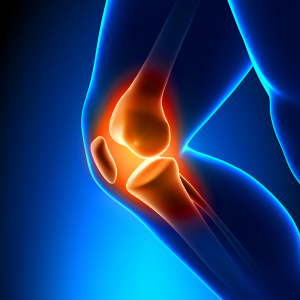Hip and Knee Replacement and physical activity
What is hip and knee replacement? 
The rate of hip and knee replacement surgeries is growing worldwide. In the Grand-Duchy of Luxembourg, 222 hip and 160 knee replacement surgeries per 100 000 persons were performed in 2011 [1]. Hip and knee joint replacements are surgical interventions designed to replace all or part of the hip or knee joint with a prosthesis. The surgery aims to relieve the pain and dysfunction from the joint that limits the patient’s daily activities. Three profiles of patients are described: younger patients with joint disease as a result of traumatic injury or malformation, older patients with degenerative disease and rheumatoid patients with systemic disease [2]. Joint replacement is recommended, if and when medications and other treatments such as physiotherapy or injections are no longer effective [1].
The effects of physical activity on hip and knee replacement
Even if participation in sport remains difficult for a quarter of patients who have undergone a joint replacement [3], participation in leisure activities is important and lead to an improvement in overall health. Exercise can reverse the impairment related to physical inactivity secondary to joint disease, and result in improved cardiovascular fitness [4] and muscle strength [5]. In addition, active patients exhibit reductions in both pain scores and body mass index, as well as an improvement in quality of life [6]. In addition, physical activity may enhance the quality of the interface between bone and prosthesis by increasing bone quality and thereby improving fixation [2].
What are the risks?
Participation in vigorous and/or high-impact physical activity can lead to earlier and increased implant wear and failure. The large forces induced by some exercises may serve to loosen cemented components. In addition, it appears that parts made of conventional polyethylene are more at risk of failure in more active patients particularly. High-impact exercises like jogging, running, tennis, squash, snowboarding, martial arts, football, handball and basketball should be avoided [2, 4, 7].
Recommendations
Physical activity is strongly recommended after hip and knee joint replacement. There is no specific recommendation concerning time spent exercising after joint replacement. The classic recommendation (i.e. 150 min per week of moderate-intensity physical activity) can be prescribed with specific adaptations regarding type of activity. Low impact physical activity such as swimming, cycling or walking are recommended in order to avoid loosening of the prosthesis. If the activity is carried out at a low intensity and/or if the patient is highly skilled, activities with higher joint loads such as skiing or hiking could be also included [2, 4]. However, patients should use load-reducing measures such as the use of ski poles during hiking. It is also unwise to begin technically demanding activities, such as mountain biking or climbing. The joint loads and the risk of injury in these activities are higher in unskilled individuals. Progressive resistance training is safe after joint replacement [5], and can consist of 1-3 sets of 10 repetitions of different movements (e.g. hip flexion, abduction and extension, knee flexion and extension). The exercises should be supervised by a physiotherapist or trainer to avoid movements that can put the prosthesis at a risk of failure.
Related groups
References
- Organisation for Economic Co-Operation and Development. Hip and knee replacement, in Health at a Glance 2013: OECD Indicators, OECD, Editor. 2013, OECD Publishing.
- Vogel LA, Carotenuto G, Basti JJ, Levine WN. Physical activity after total joint arthroplasty. Sports Health 2011;3(5):441-50. Available at: http://dx.doi.org/10.1177/1941738111415826.
- Wylde V, Livesey C, Blom AW. Restriction in participation in leisure activities after joint replacement: an exploratory study. Age Ageing 2012;41(2):246-9. Available at: http://dx.doi.org/10.1093/ageing/afr180.
- Kuster MS. Exercise recommendations after total joint replacement: a review of the current literature and proposal of scientifically based guidelines. Sports Med 2002;32(7):433-45.
- Skoffer B, Dalgas U, Mechlenburg I. Progressive resistance training before and after total hip and knee arthroplasty: a systematic review. Clin Rehabil 2014. Available at: http://dx.doi.org/10.1177/0269215514537093.
- Papalia R, Del Buono A, Zampogna B, Maffulli N, Denaro V. Sport activity following joint arthroplasty: a systematic review. Br Med Bull 2012;101:81-103. Available at: http://dx.doi.org/10.1093/bmb/ldr009.
- Bloomfield MR, Hozack WJ. Total hip and knee replacement in the mature athlete. Sports Health 2014;6(1):78-80. Available at: http://dx.doi.org/10.1177/1941738113512760
Authors & expert
Authors : Alexis Lion1, Jane S. Thornton2.
Expert : Christian Nührenbörger3.
1 Luxembourg Institute of Health, Sports Medicine Research Laboratory, L-1460 Luxembourg, Luxembourg
2 Centre Hospitalier Universitaire Vaudois, Policlinique Médicale Universitaire, CH-1011 Lausanne, Switzerland
3 Centre Hospitalier de Luxembourg – Clinique d’Eich, Clinique du Sport, L-1460 Luxembourg, Luxembourg
Year of publication
2015
